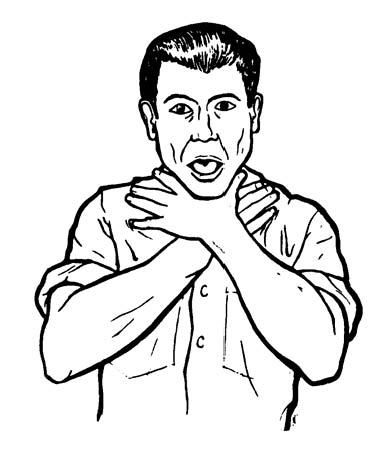Cardiopulmonary Resuscitation
LESSON 5: Remove an Upper Airway Obstruction in an Adult
5-2
5-2. RECOGNIZE A PERSON IN RESPIRATORY DISTRESS
A casualty who is conscious and has an object lodged in his airway will begin to cough or at least try to cough. He will probably have a distressed look on his face and be clutching his throat. This clutching action is natural, but it has also been adopted as the universal signal for choking (figure 5-1). Bluish coloration (cyanosis) of the lips, interior of the mouth, and nail beds are indications of low oxygen content in the blood. Any unconscious casualty should be examined to see if he is breathing. Even if the casualty is breathing, perform periodic checks to make sure he is continuing to breathe.
Figure 5-1. Universal distress signal for choking.


